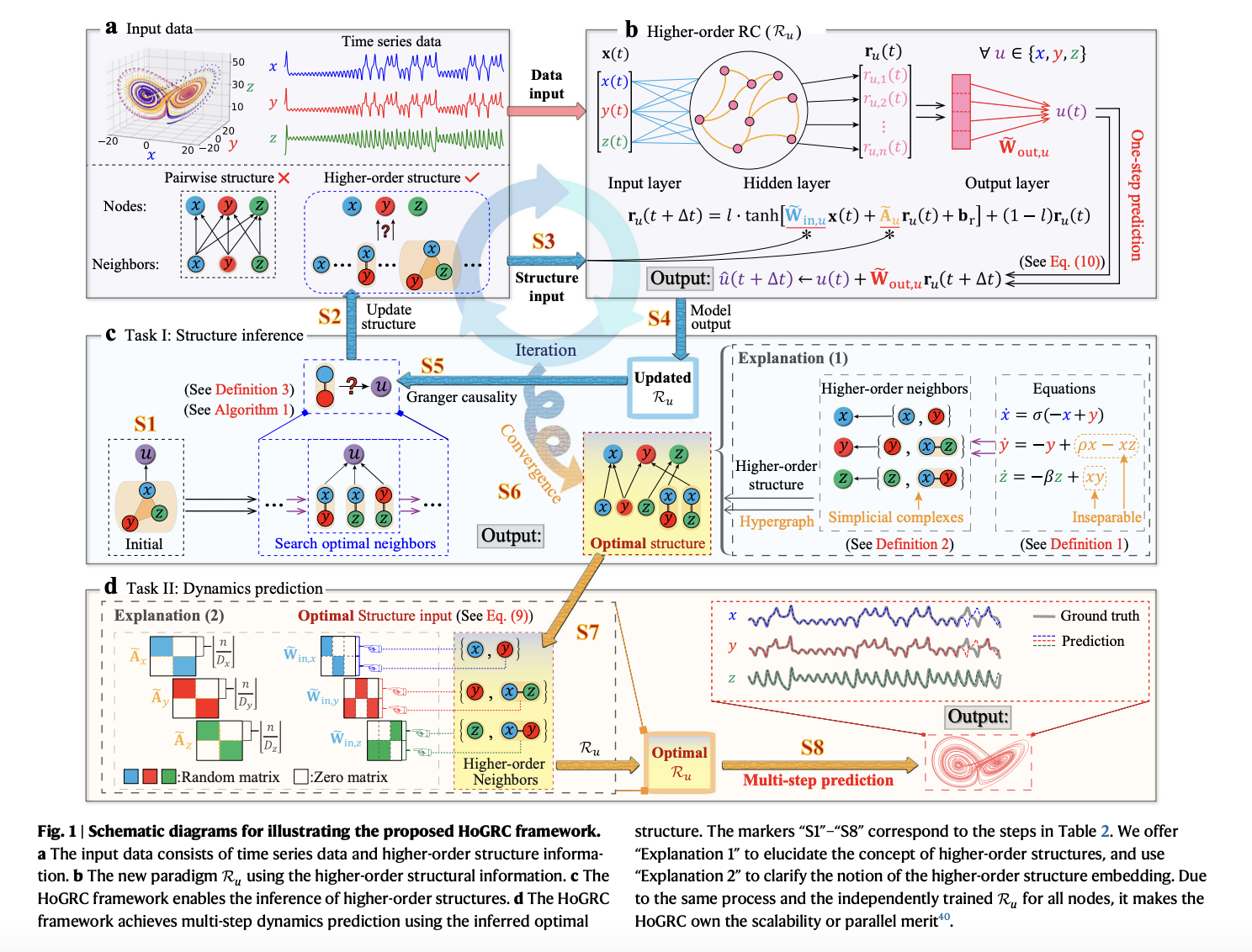This AI Paper from China Proposes a Lightweight Machine Learning Method that Enhances Scalable Structural Inference and Dynamic Prediction Accuracy

Machine Learning (ML) has become an indispensable tool in recent years for solving a wide range of scientific and practical issues. Model-free machine learning methods have drawn interest for their ability to analyze and forecast complicated dynamics seen in time series data, but these approaches face difficulties when applied to high-dimensional systems with heterogeneous connections and extremely complicated behaviors.
Developing sophisticated ML techniques that can identify internal interactions in complex systems and reliably forecast their future evolution is crucial to overcoming these obstacles. Modern ML techniques like Recurrent Neural Networks (RNNs), Neural Ordinary Differential Equations (NODEs), and deep residual learning offer advantages for handling nonlinear and complex time series data when compared to classical approaches like Auto-Regressive models (ARMA) and Multi-Layer Perceptrons (MLP).
While many of these methods need parameter estimates, RNNs and their variations, such as Gated Recurrent Units (GRU) and Long Short-Term Memory (LSTM) networks, show good predictive performance. As an alternative, a lightweight RNN called Reservoir Computing (RC) has been developed to anticipate the temporal-spatial behaviors of chaotic dynamics.
Even though RC has demonstrated potential in several situations, it can yet be improved. Recent efforts have focused on enhancing RC’s modeling capability and computational effectiveness. These methods have drawbacks when used in more nonlinear and higher dimensional systems. Parallel RC (PRC), a parallel forecasting technique that takes advantage of the local structure of systems, has been presented as a solution to this problem. However, the PRC’s typical causal inference techniques are unable to directly reveal higher-order structures, which are essential for comprehending intricate dynamical systems.
To address these issues, a revolutionary computer paradigm known as higher-order RC has been developed. The goal of this paradigm is to include structural data, especially higher-order structures, in the reservoir. Higher-order RC incorporates Granger Causality (GC) since higher-order structures of complicated dynamical systems are frequently unknown in advance.
The Higher-Order Granger RC (HoGRC) framework is an iterative method that makes dynamic predictions and identifies higher-order interactions simultaneously. The framework is scalable and can be applied to complicated and higher-dimensional dynamical systems, enabling precise dynamic prediction at the node level and complex structure inference.
HoGRC is a framework without models that is data-driven and intended to accomplish two main goals. First, by combining RC and the idea of Granger causality, it seeks to infer higher-order structures. This indicates that it looks to comprehend higher-order interactions within the data in addition to direct causal linkages. Second, HoGRC uses both the inferred higher-order information and the original time series data to make multi-step predictions.
The team has analysed HoGRC in a variety of representative systems, such as network dynamical systems, classical chaotic systems, and the UK power grid system, in order to demonstrate its effectiveness and resilience along with its versatility and usefulness. The results have shown that structural information can be used to improve predictive power and model robustness, with notable progress in both structure inference and dynamics prediction tasks.
In conclusion, this approach infers higher-order structures at the node level, enabling precise system reconstructions and long-term dynamics forecasts. It consists of two primary tasks: multi-step dynamics prediction and high-order structure inference.
Check out the Paper. All credit for this research goes to the researchers of this project. Also, don’t forget to follow us on Twitter. Join our Telegram Channel, Discord Channel, and LinkedIn Group.
If you like our work, you will love our newsletter..
Don’t Forget to join our 39k+ ML SubReddit
Tanya Malhotra is a final year undergrad from the University of Petroleum & Energy Studies, Dehradun, pursuing BTech in Computer Science Engineering with a specialization in Artificial Intelligence and Machine Learning.She is a Data Science enthusiast with good analytical and critical thinking, along with an ardent interest in acquiring new skills, leading groups, and managing work in an organized manner.


